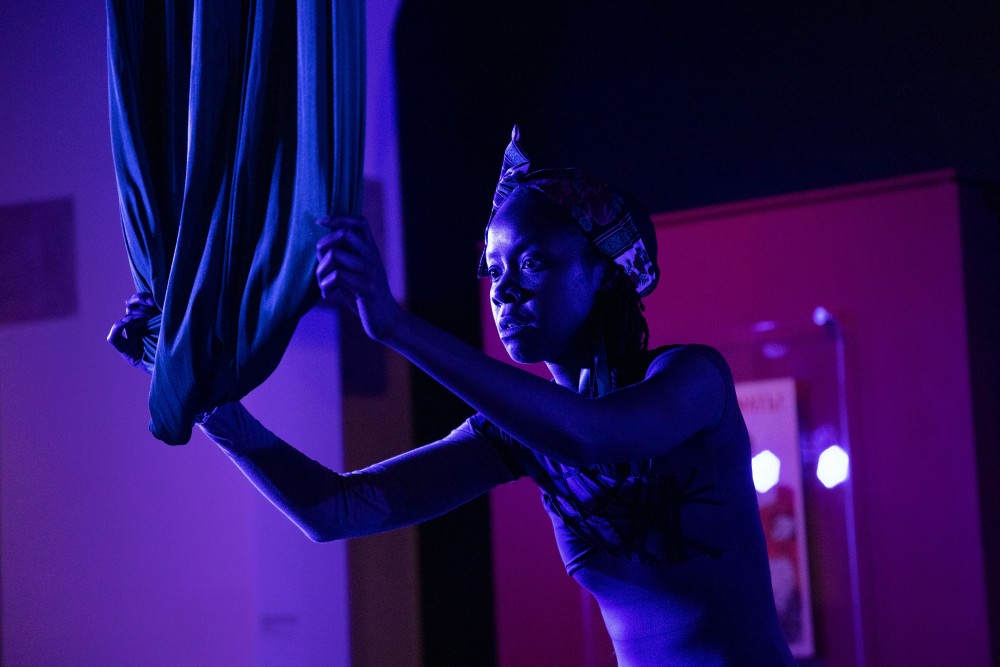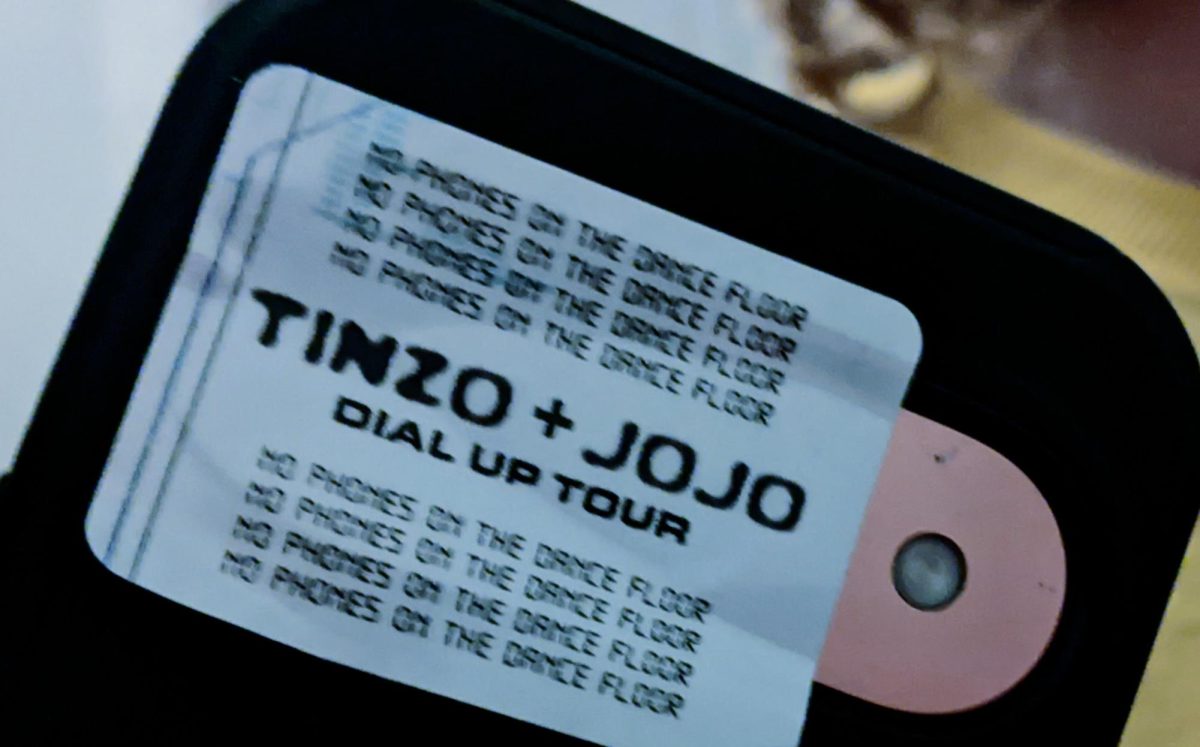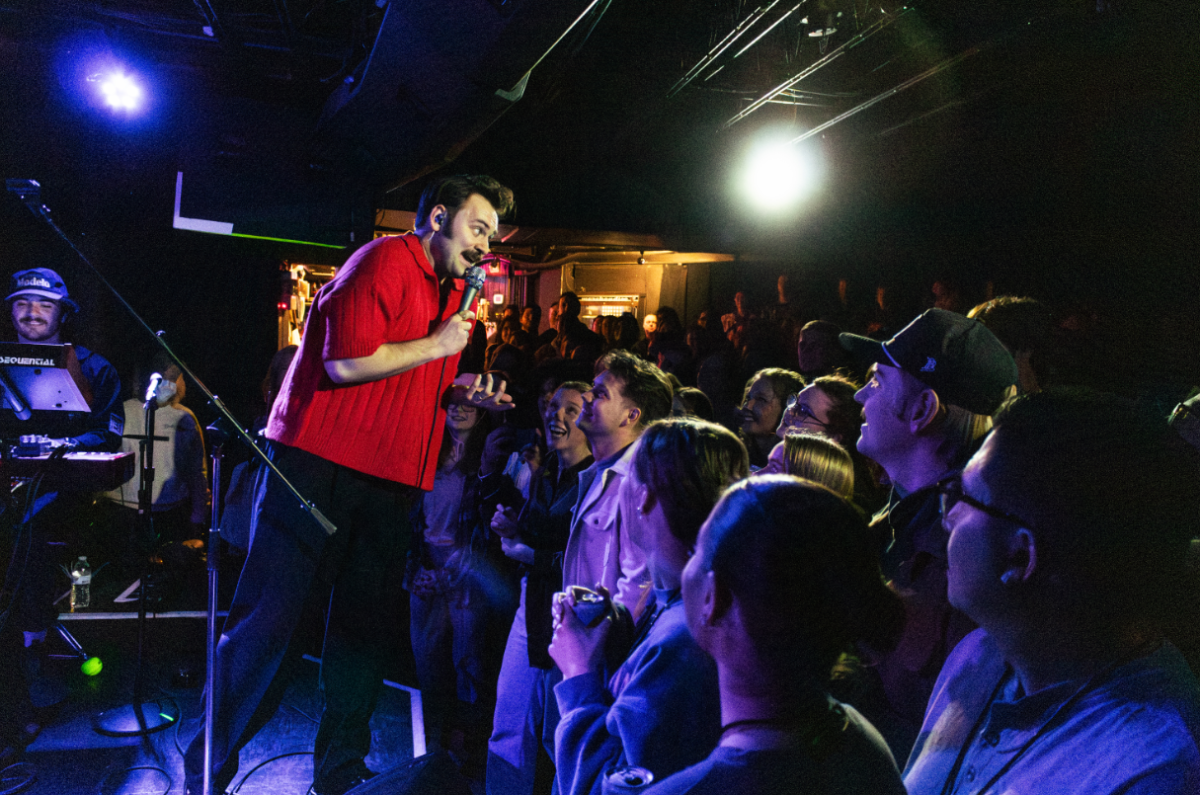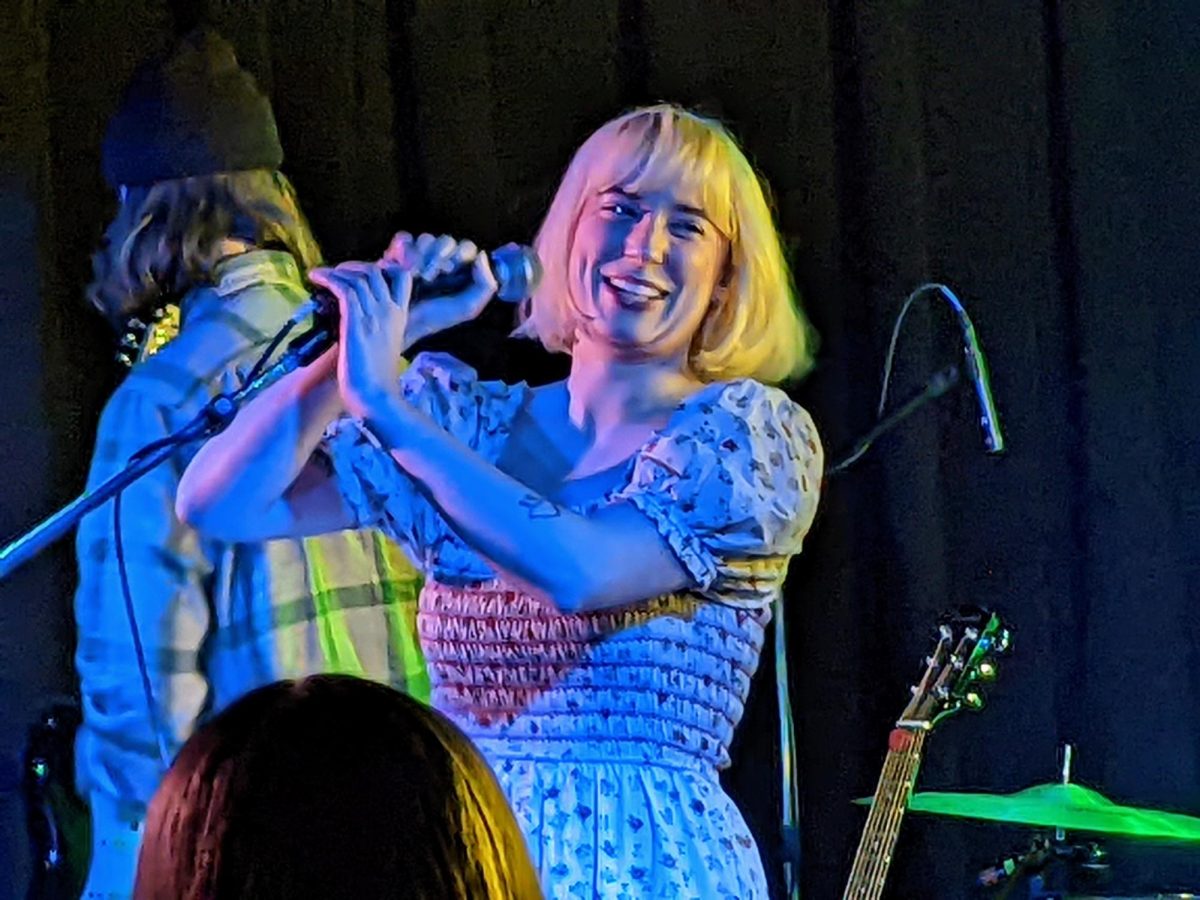Russian folk music swells as a woman climbs up green aerial silks, wrapping them around her legs as she climbs higher and higher.
A moon is projected against the wall and she is posed in the middle of it. It feels as though everyone is collectively holding their breath.
She drops suddenly, and everyone exhales. This is the story of Bone Mother.
The aerial performance, combined with musical numbers and scripted dialogue, is presented by the Museum of Russian Art and Sandbox Theatre. The show is based on the Russian folk story of Baba Yaga, an old woman who is rumored to be a witch.
“She was this figure that was so ambiguous,” said Evelyn Digirolamo, a co-director of the show. “We were really interested in exploring her power. She’s shown up [in stories] for hundreds of years and has this power that usually isn’t attributed to someone who’s female-identifying.”
All three aerial silks are hung from the ceiling in the middle of the main floor in the Museum of Russian Art. Chairs are set up for an audience with the art on the walls surrounding the performance. Audience members are so close to the performers they can feel the rush of air as one of the actors runs past, physically placing them in the story.
The show follows the journey of a woman named Vasilisa through three stages of her life: childhood, adulthood and as an elder. During all three stages, something is pulling her to visit Baba Yaga in the forest, at her house perched upon chicken legs.

Through Vasilisa’s story, “Bone Mother” explores femininity, its relationship to nature and its persistence against impeding forces.
“I am very stoked on gender energies and all of these things that are really prescient in our culture right now,” said co-director Danielle Siver. “That makes the story feel urgent to me and not just something that’s stuck in ancient folk tales.”
The concept for “Bone Mother” was practically invented out of nothing. Sandbox Theatre’s productions are a collaborative effort by the company, meaning the script is written by everyone and the scenes are staged by everyone. Many of the actors had to learn how to maneuver aerial silks for the show.
“In a traditional theater piece, you’re working from a script that someone’s made,” said Henry Ellen Sansone, a University of Minnesota alum who played the role of the Cat in the show. “And [for “Bone Mother”] there was nothing other than our research and what was resonating with us at the time. Now there’s a full show.”
And it transports the audience. They felt Vasilia’s struggle to swim through the river to get to Baba Yaga. She screams for help from the Cat and her voice echoes in tandem with the dark folk music.
“[The audience is] going to be wowed by the spectacle of it,” Siver said. “Then, hopefully left with this mysterious feeling, this curiosity about the shadow that’s within them.”
Through dark lighting and swift costume changes, “Bone Mother” highlights the ambiguity that can come with gender and identity.
“I appreciate being able to do a show that really is looking at and trying to grapple with what it means to be ambiguous and have contradiction in your body,” Sansone said.
The remaining runs of the show are sold out with limited opportunity to get a ticket if someone doesn’t show. For a performance anchored in the past, its relevance to the present moment makes it all the more enchanting.
“We showed this struggle in grappling with shadow sides of yourself, with the ambiguity of life, which I think is something everyone can relate to,” Digirolamo said. “So, I’m curious [to see] how it comes up in everyone.”
What: Bone Mother
When: Sept. 19-27, 7:30 p.m.
Where: The Museum of Russian Art, 5500 Stevens Ave S., Minneapolis
Cost: $5 – 24








